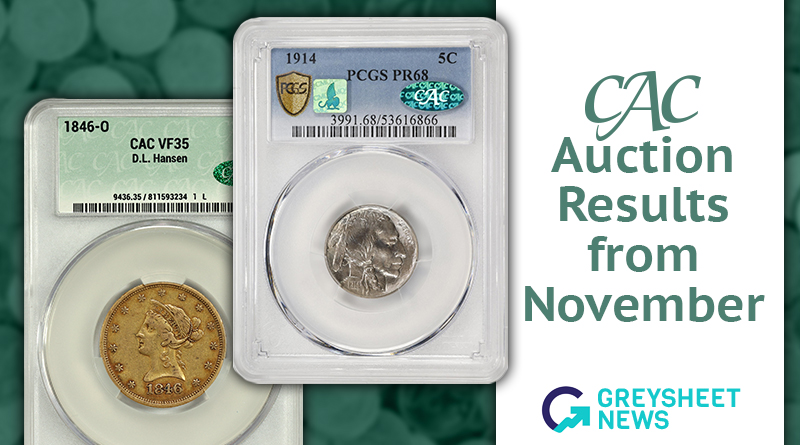Greysheet & CPG® PRICE GUIDE
- U.S. Coins /
- Pattern Coinage /
-
1797 Pattern Values
Year
Sort by
About This Series
History and Overview
Two pattern die varieties from 1797 are known, both being trial impressions from regular dies used to strike gold coins. As is true of other patterns of the era, these were made strictly for utilitarian purposes, to test the appearance of the dies, with no numismatic considerations.
Collecting Perspective
Of the two pattern varieties of this year, only one example of each has been traced, making them essentially non-collectible, although they are each held in the private sector.
One was defaced after it was struck, to prevent it from being gilt and passed into circulation. One can envision that such copper patterns were made for many other denominations and dies in this era, and then destroyed, probably by recycling through the melting and rolling process to create strips from which half cent and cent planchets were cut.
In the present instance, the defacing marks are part of the history and personality of the patterns and are not considered to be a negative aspect.
Catalog Detail
Legal Disclaimer
The prices listed in our database are intended to be used as an indication only. Users are strongly encouraged to seek multiple sources of pricing before making a final determination of value. CDN Publishing is not responsible for typographical or database-related errors. Your use of this site indicates full acceptance of these terms.




| Patterns (1797) | Value Range | Favorite | |||
|---|---|---|---|---|---|
| Patterns (1797) | Value Range | ||||
|
$30,000
-
$30,000
$30,000 - $30,000
|
||||
|
-
|
||||
From the Greysheet Marketplace
Buy Now: $3,695.00
Buy Now: $2,890.63
Buy Now: $120,000.00
Buy Now: $38,900.00
Buy Now: $5,500.00
Buy Now: $37,000.00
Buy Now: $3,121.88
Buy Now: $37,000.00
Buy Now: $31,500.00
Buy Now: $125,000.00
Related Stories (powered by Greysheet News)
View all news
Greysheet Catalog Details
History and Overview
Two pattern die varieties from 1797 are known, both being trial impressions from regular dies used to strike gold coins. As is true of other patterns of the era, these were made strictly for utilitarian purposes, to test the appearance of the dies, with no numismatic considerations.
Collecting Perspective
Of the two pattern varieties of this year, only one example of each has been traced, making them essentially non-collectible, although they are each held in the private sector.
One was defaced after it was struck, to prevent it from being gilt and passed into circulation. One can envision that such copper patterns were made for many other denominations and dies in this era, and then destroyed, probably by recycling through the melting and rolling process to create strips from which half cent and cent planchets were cut.
In the present instance, the defacing marks are part of the history and personality of the patterns and are not considered to be a negative aspect.
Catalog Detail
Legal Disclaimer
The prices listed in our database are intended to be used as an indication only. Users are strongly encouraged to seek multiple sources of pricing before making a final determination of value. CDN Publishing is not responsible for typographical or database-related errors. Your use of this site indicates full acceptance of these terms.










 Loading more ...
Loading more ...











